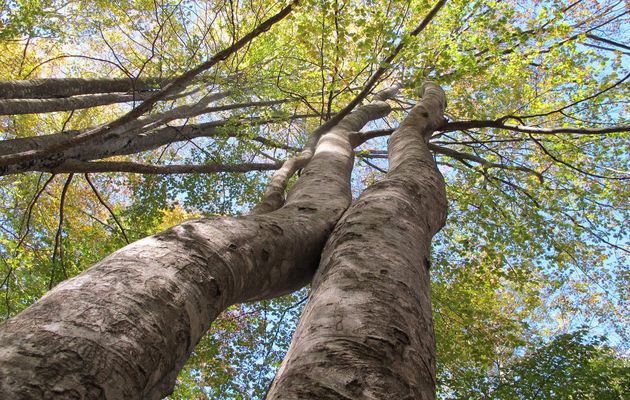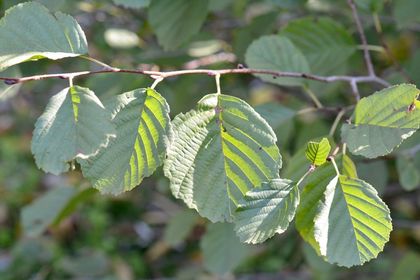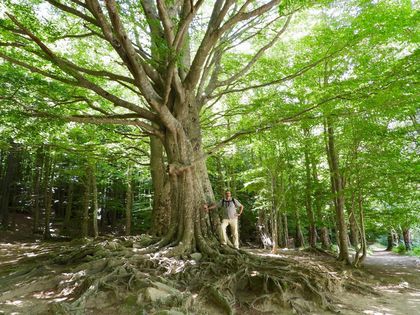The Old Testament’s beech wood instruments
Beech trees need cool, nutrient-rich soil, as well as plenty of rain and atmospheric humidity. These conditions are not common in Palestine, so there are not likely to have been any beech groves there.
01 MARCH 2020 · 11:00 CET

And David and all the house of Israel were celebrating before the Lord, with songs and lyres and harps and tambourines and castanets and cymbals” (2 S. 6:5)
The Hebrew word berosh, which occurs in many Biblical texts, has been translated in several different ways.
In the Septuagint the term is translated as pitys, (beech, Ezekiel 27 v 5); kedros (cedar, Is. 14 v 8) or xyla Libanu (the cedars of Lebanon). And in the Latin Vulgate the term used is abies (fir tree) and cupressus (cypress).
All these trees are conifers and are plentiful in Israel, except for the beech tree, which belongs to the Fagaceae family and does not grow in Biblical lands.

For this reason, the term berosh probably does not refer to the ash tree but to the cypress, or to one of the other conifer trees that are common in Israel, whose wood was used to build ships (Ezekiel 27 v 5), musical instruments (2 Samuel 6 v 5), beams for the roofs of houses (1 Kings 5 v 8, 10) and it was also in these trees that storks would build their nests (Psalm 104 v 17).
Nevertheless, beech trees (Fagus sylvatica) are deciduous trees belonging to the Fagaceae family which form forests with a thick roofing of foliage called groves, from northern Europe to Asia Minor.
They can reach a height of 35 to 40 metres, and their trunk is straight, with hardly any branches, and their bark is whitish-grey in colour.
Their simple-shaped leaves are bright green when they are young, and grow darker with age. They sprout alternately on young branches and on the thicker, stronger branches they form clusters.

The leaf-stem is short is short and the lateral nerves are parallel and clearly visible. These leaves spread out horizontally in order to trap as much light as possible, which is why beech groves tend to be dark.
In the summer heat there is nothing more pleasant than to walk in the shade of this thick, leafy foliage. However, once the leaves are fully developed, they trap all the sunlight and do not allow any other plant to grow under them.
Beech trees need cool, nutrient-rich soil, as well as plenty of rain and atmospheric humidity. These conditions are not common in Palestine, so there are not likely to have been any beech groves there.
If beech wood ever was used it would have been imported from more northerly regions. In certain mountainous areas, there are forests with a mixture of beech trees and fir trees.
The roots of the beech tree are superficial and have to spread out extensively in order to catch rainwater and atmospheric humidity from the atmosphere.
The English theologian John Kitto (1804-1854), renowned for his writing about Biblical and oriental topics, wrote the following lines about the ceremonial dances recorded in the Old Testament, and the instruments that were made from beech wood:
“And David and all the house of Israel were celebrating before the Lord, with songs and lyres and harps and tambourines and castanets and cymbals”. It was mainly on festive occasions that such instruments were used, and it was normally women who carried them and played them: The singers led the procession, while the musicians brought up the rear; in between were the young girls with tambourines. This was customary practice in most ancient cultures, and remains so in the present day in oriental nations. Indeed, present-day customs in these countries serve to illustrate the Biblical allusions to such instruments, but fortunately we also have much moreancient illustrations of great documentary value on the monuments of ancient Egypt, where there repeatedly appear etchings of different kinds tambourines as the preferred instrument for both festive and religious occasions.
There were three types of tambourine that differed in both their shape and their sound: one was circular, another square or rectangular; and the third had two distinct spaces, separated by a bar. They were in common use throughout Egypt, and often accompanied the harp and other instruments. They were generally played by women, who are depicted dancing to the sound of the tambourine and without the accompaniment of any other instrument”. [1]
[1] Spurgeon, C. H., The Treasury of David.
Published in: Evangelical Focus - Zoe - The Old Testament’s beech wood instruments
